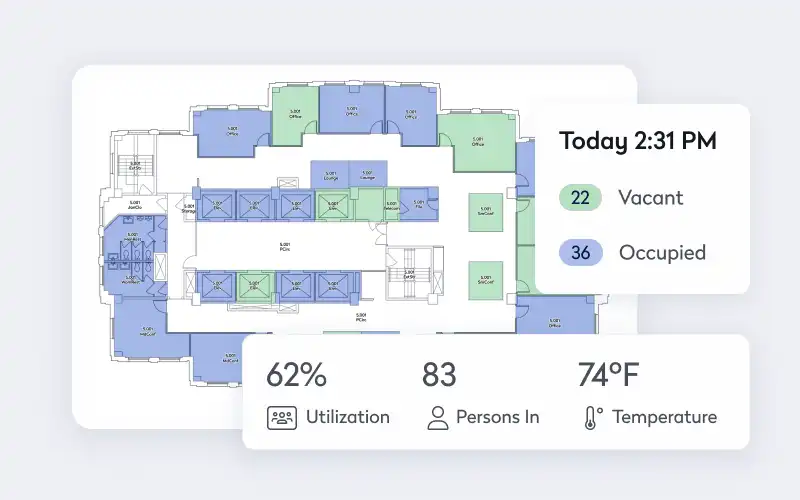
Budgeting at government facilities is inherently complex, often involving multiple layers of approval, performance-based planning, and stakeholder engagement. Despite efforts to improve transparency, many facility managers still face limited visibility due to data silos, making it difficult to plan effectively or build public trust.
Key takeaways
- Digital records and modern facility management platforms are essential for greater clarity, consistency, and confidence in budgeting: They enable a shift from reactive to proactive planning, which is vital for effective budget management and long-term strategic decision-making.
- Digital records help track maintenance and repair costs, manage asset lifecycles, and monitor occupancy trends, all of which are critical for optimizing resource allocation and ensuring operational efficiency: By using predictive maintenance analytics and work order management systems, facility managers can identify trends and predict future expenses, leading to more stable and predictable budgeting.
- Reliable data from digital records supports accurate forecasting and informed decision-making, helping to reduce financial inefficiencies and potential oversights: The data also improves transparency and accountability in budgeting processes, ensuring that stakeholders have a clear understanding of the facility’s financial status and needs.
Government budgets can also be subject to sudden shifts — known as “punctuations” — triggered by political or economic disruptions. The result can be a budgeting environment that is reactive, opaque, and difficult to navigate. Through digital transformation, facility managers can budget with greater clarity, consistency, and confidence.
What are the common forecasting and budgeting challenges for facility managers in the public sector?
For a facility manager working at a government agency, forecasting and budgeting involves navigating a complex system of requirements and constraints, including:
- Regulatory compliance: Government facilities must adhere to a long list of federal, state, and local regulations. Non-compliance can mean fines, legal issues, and safety hazards. Governments face increasing complexity in regulatory design and delivery, especially in sectors like infrastructure and public services, according to the Organisation for Economic Co-operation and Development.
- Funding constraints: Government budgets are often subject to political and economic uncertainties. Facility managers must work with limited funding, which can make it difficult to plan and execute necessary projects.
- Long-term planning: Capital projects, such as building renovations or system upgrades, require long-term planning and forecasting. Accurately predicting future costs and securing the necessary funds over multiple budget cycles is a significant challenge. In fact, the Federal Capital Improvements Program (FCIP) report reveals that many federal capital projects are still in the early planning stages due to coordination and funding delays.
- Maintenance and repairs: Facility managers must allocate funds to address these issues quickly to avoid operational disruptions. There’s also the issue of trying to fund deferred maintenance. The Department of Defense and federal civilian building backlogs were $370 billion in 2024, while in March 2025, the General Service Administration said its backlog exceeded $17 billion.
These challenges are particularly important because they directly impact the facility’s ability to function safely, efficiently, and in compliance with regulations, all while operating within the constraints of a government budget.
What role do digital records play in budgeting at federal facilities?
Reliable data is essential for effective forecasting and budgeting in facility management. It provides a clear and accurate representation of current operations, enabling managers to identify trends, make informed decisions, and predict future needs with precision. Without reliable data, budgeting processes can be imprecise and prone to errors, leading to financial inefficiencies and potential oversights. Accurate data ensures proper resource allocation, supports the setting of realistic financial goals, and facilitates strategic planning. It also improves transparency and accountability, making it easier to justify budget requests and demonstrate the value of facility management initiatives. Reliable data forms the foundation for sound financial planning and operational excellence.
How does facility management support better budgeting for government agencies?
By tracking facility and maintenance metrics and key performance indicators, you can capture the insights you need to create and justify better budgets. Modern facility and asset management software helps you capture the data you need.
Maintenance and repairs costs
Tracking maintenance and repair costs is crucial for identifying trends and predicting future expenses. By analyzing these costs over time, you can spot patterns, such as seasonal variations or recurring issues, and allocate budget more effectively.
Track maintenance and repair costs with:
- Predictive maintenance analytics: Leverage machine learning to predict when equipment is likely to fail, allowing for proactive maintenance and reducing unexpected repair costs
- Work order management system: Track and manage all maintenance and repair work orders, providing detailed cost reports and historical data for trend analysis
- Vendor and contact management: Manage relationships with vendors and track contract costs, ensuring maintenance and repair expenses are optimized and transparent
The data you capture can also help you justify the need for more robust preventive maintenance programs, which can reduce the frequency and severity of unexpected repairs, leading to more stable and predictable budgeting.
Energy consumption and cost
Monitoring energy consumption and costs helps identify areas where you can improve energy efficiency. High energy costs can be a significant drain on the budget, and by tracking this data, you can implement energy-saving measures.
Find and remove inefficiencies with:
- Real-time energy monitoring: Capture continuous data on energy usage, allowing for immediate identification of inefficiencies and high-consumption areas
- Efficiency reporting tools: Generate reports on energy consumption, helping to meet regulatory requirements and efficiency goals
Once you’ve found the low-efficiency areas, you can address them directly, for example with more efficient lighting or HVAC systems to reduce ongoing expenses and align with efficiency goals, which can be a factor in securing additional funding.
Occupancy and utilization rates
Occupancy rates deliver insights into how the facility is being used and can help in optimizing space and resource allocation. High occupancy might indicate a need for more maintenance, security, and support services, while low occupancy could suggest opportunities for cost savings through rightsizing.
Optimize space use to cut operational costs through:
- Space utilization sensors: Leverage sensors to monitor and report on the actual usage of different areas within the facility, providing accurate occupancy data
- Desk and room booking: Track reservations and usage of desks and meeting rooms to understand how space is being utilized and identify underused areas
Understanding occupancy trends helps you when forecasting future needs and adjusting the budget accordingly to ensure the facility remains functional and cost-effective.
Equipment and asset lifespan
Keeping track of the lifespan of equipment and assets is important for long-term planning. Knowing when major pieces of equipment are due for replacement or major work allows you to budget for these expenses in advance.
Control every step of the life cycle with:
- Asset management software: Track the life cycle of all equipment and assets, including purchase dates, maintenance history, and expected lifespan
- Condition monitoring: Use sensors and Internet of Things devices to monitor the condition of equipment in real-time, providing alerts when maintenance is needed or when equipment is approaching the end of its lifespan
- Depreciation and replacement planning: Automate the calculation of asset depreciation and generate replacement schedules, helping to plan for future capital expenditures
Managing assets and equipment also helps you avoid sudden, large expenditures due to breakdowns that can force you to apply for emergency additional funding.
Safety and security incidents
Recording and analyzing safety and security incidents helps in assessing the effectiveness of current measures and identifying areas for improvement. By understanding the frequency and nature of these incidents, you can allocate resources more effectively to prevent future occurrences.
Reduce the risk of injuries and associated legal issues with:
- Incident reporting and management: Empower staff to report safety and security incidents easily, and tracks the resolution process, providing detailed incident reports
- Access control integration: Control access to ensure only authorized staff and visitors can access specific areas
The data also helps you when justifying the need for additional security measures or training, which can be a significant part of the budget.
Digital facility records support federal facility budgeting
Budgeting in government facilities will likely remain a complex task, shaped by layered processes, limited data visibility, and unpredictable shifts. But with the right digital tools, facility managers can move from reactive to proactive — gaining the clarity, consistency, and confidence needed to plan more effectively and adapt to change. Digital records and modern facility management platforms also make it easier to track maintenance and repairs, manage asset lifecycles, and monitor occupancy trends. These capabilities not only support better budgeting but also help ensure long-term operational efficiency and accountability.






